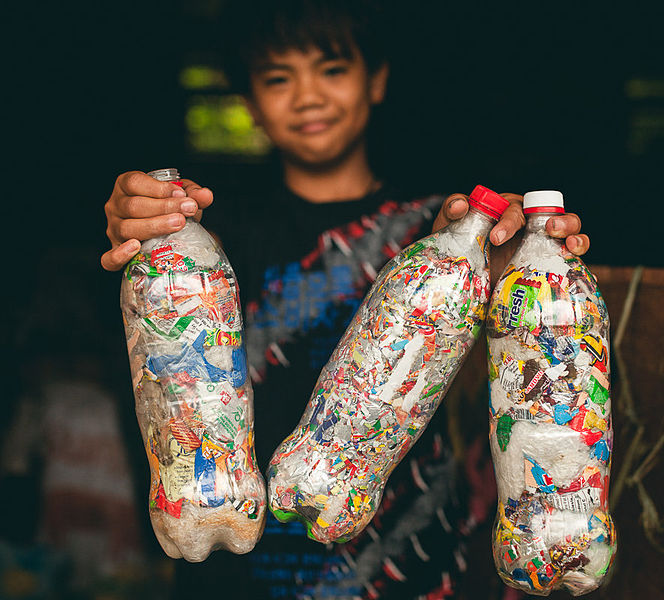Introduction To Ecobricking
May 31, 2021
Every piece of plastic ever made still exists on our planet. And since plastic never truly biodegrades, it will all continue to exist forever. That’s over 8.3 billion tons of plastic.
Corporations have marketed recycling as an effective way to give plastics a “new life” and curb plastic pollution when, in reality, only about 9% of plastic waste is recycled, 12% is incinerated, and the remaining 79% is dumped into landfills. Even when plastic is recycled, its quality is diminished after a few rounds of being recycled, and it becomes unrecyclable. Additionally, many plastic materials, particularly plastic bags and other softer, weaker plastics, are difficult to recycle and not accepted by recycling centers, making them destined to sit in landfills or pollute nature for eternity.
So what are humans to do with all this plastic waste? How can we put it to better use and keep it out of landfills, waterways, and natural habitats when industrial recycling is a failure, and corporate greed sees no end? One solution is ecobricking.
The Global Ecobrick Alliance (GEA), a not-for-profit Earth Enterprise and leader of the ecobricking and plastic sequestration movement, describes ecobricking as “a simple, low-tech solution” to plastic waste that uses circular design regenerative technology principles.
Ecobricks, or bottle bricks, are plastic bottles packed so densely with plastic waste that they are as strong as bricks. Securing waste plastics into these bricks prevents them from otherwise polluting and poisoning the environment with microplastics. Ecobricks are used like normal bricks to build houses, garden and play structures, furniture, and more.
The GEA website has established ecobricking principles, best practices, and instructions for ecobrickers to make safe, durable, and indefinitely reusable ecobricks. They are easy to make, and anyone can get started.
Regular ecobricks are made from transparent polyethylene (PET) plastic bottles and clean, dry plastic waste. Using clean and dry materials to make ecobricks is crucial to ensuring that bricks are sturdy, as moisture and other contaminants encourage bacterial growth which may lead to bloated and even burst bottles.
Other types of ecobricks include cigbricks and ocean ecobricks. Cigbricks are packed exclusively with the acetate filters in cigarettes with the paper removed. Ocean ecobricks are designed specifically for plastic waste found in and near waterways like beaches, oceans, rivers, etc. These plastics tend to be larger, dirtier, and wet, making them unsuitable for regular ecobricks.
It is important to remember that while ecobricking is a method of plastic sequestration, it is not a final solution to plastic pollution. Ecobricking should not be an excuse for unhindered consumption of plastic, but rather a way to prevent unavoidable plastics from harming the environment. The GEA clarifies that ecobricking is not a “sustainable” technology, as the aim of the practice is to divest from the petro-capital economy.
Visit you can click here for more information, applications, and detailed procedures for ecobricking. Start building ecobricks of your own and find an ecobrick hub near you to exchange them!
Photo Courtesy of WIKIPEDIA-COMMONS.COM

